Company Profiles & Analysis
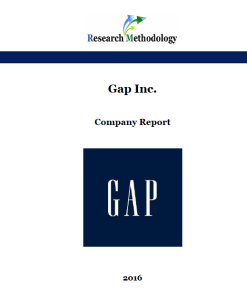
Gap Inc. is a global apparel retail company that owns Gap, Banana Republic, Old Navy, Athleta, and Intermix clothing, fashion and accessories brands. The first GAP store was opened in 1969 by Doris and Don Fisher and today Gap Inc. is the largest specialty apparel retailer in the North America with 3,721 company-operated and franchise store locations around the globe. The company has more than 140,000 employees worldwide (Annual Report, 2015) and its organizational structure can be characterized as hybrid integrating certain elements of divisional and hierarchical organizational structures. Gap Inc. uses cost leadership business strategy for all five brands within its portfolio offering fashion, apparel and accessories products for much cheaper prices compared to the prices of premium fashion brands. Apart from cost leadership, competitive advantages possessed by the company include a strong portfolio of distinct brands across multiple channels, a global presence of the brand and strategic relationships with its suppliers. At the same time, Gap Inc. has certain weaknesses such as declining sales and profits, failure to utilize online sales channels in an efficient manner, dependency on external manufacturers and others. The company has been struggling with declining sales and profits during the last two years. Net sales for fiscal 2015 decreased 4 percent to USD 15.8 billion compared with USD 16.4 billion for fiscal 2014. Gross profit for fiscal 2015 was USD 5.7 billion compared with USD 6.3 billion for fiscal 2014 (Annual Report, 2015). The range of initiatives introduced by CEO Art Peck to deal with this problem includes focusing on core products that contributed to the global success of the company, start selling on Amazon and engaging in international market expansion. Gap Inc. Report contains the application of the major analytical strategic frameworks in business studies such as SWOT, PESTEL, Porter’s Five Forces, Value…
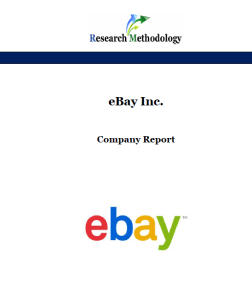
eBay Inc. is a US-based e-commerce company and global corporation that provides consumer-to-consumer and business-to-consumer online sales platform. Founded in 1995 by Pierre Omidyar, nowadays eBay employs nearly 12,000 people worldwide, including 6200 employees in the USA. More than 160 million people buy from eBay annually and the company generated the revenues of more than USD 8.6 billion in 2015 alone. eBay’s mission statement is ‘to be the world’s favourite destination for discovering great value and unique selection’. eBay business strategy focuses on benefiting from the first mover advantage via introducing innovative services and regularly adding new features and capabilities to existing services with the aim of enhancing user experience. The senior management led by CEO and President Devin Wenig has made a strategic decision to transfer the business from an online auction to become the largest online retailer, an area which is currently dominated by Amazon. The e-commerce company has certain weaknesses that include dependence of the business on a range of products and services controlled by competitors such as Google, an overall complexity of the business model and an absence of eBay’s own distribution network to compete with Amazon. eBay Inc. Report contains the application of the major analytical strategic frameworks in business studies such as SWOT, PESTEL, Porter’s Five Forces, Value Chain analysis and McKinsey 7S Model on eBay. Moreover, the report contains analyses of eBay’s business strategy, leadership and organizational structure and its marketing strategy. The report also discusses the issues of corporate social responsibility. 1. Introduction 2. Business Strategy 3. Leadership 4. Organizational Structure 5. SWOT Analysis 5.1 Strengths 5.2 Weaknesses 5.3 Opportunities 5.4 Threats 6. PESTEL Analysis 6.1 Political Factors 6.2 Economic Factors 6.3 Social Factors 6.4 Technological Factors 6.5 Environmental Factors 6.6 Legal Factors 7. Marketing Strategy 7.1 7Ps of Marketing 7.2 Segmentation,…
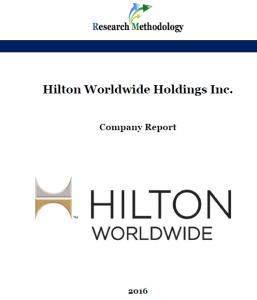
Hilton Hotels is a global flagship brand of Hilton Worldwide Holdings Inc.and it has 572 hotels and resorts in 85 countries and territories across six continents. Hilton Worldwide is the largest hotel company and the fastest growing hotel company in the world. Along with Hilton Hotels, a vast yet focused portfolio of Hilton Worldwide 13 brands in the premium hotels and resorts sector such as Waldorf Astoria, Conrad, Canopy, Curio, Double Tree, Embassy Suites and Hampton. Incorporated in 1919 by Conrad Hilton, currently, Hilton Worldwide owner base comprises 10,000 owners, of which 76% are repeat owners. The company has achieved Adj. ABITDA increase of 13 per cent in 2015 compared to the previous year. Importantly, the company converted 14,000 rooms from competitors’ brands and independent hotels during the same period. In 2015, the company earned the total revenues of about USD 11.2 billion, an increase of about 7 per cent compared to the previous year. In January 2016 Hilton Worldwide launched its latest brand Tru by Hilton which is intended to target mid-scale customer segment. Hilton Worldwide mission statement is formulated in the following manner: “To be the most hospitable company in the world – by creating heartfelt experiences for Guests, meaningful opportunities for Team Members, high value for Owners and a positive impact in our Communities.” Hilton business strategy can be described as service differentiation with a focus on quality, maintaining the highest level of standards and integrating IT systems into various aspects of service provision. The most noteworthy weaknesses associated with Hilton Worldwide include debts of more than USD 10 billion, overdependence on the US market and the lack of flexibility of the business due to its large size. Hilton Worldwide Holdings Inc. Report contains the application of the major analytical strategic frameworks in business studies such as…
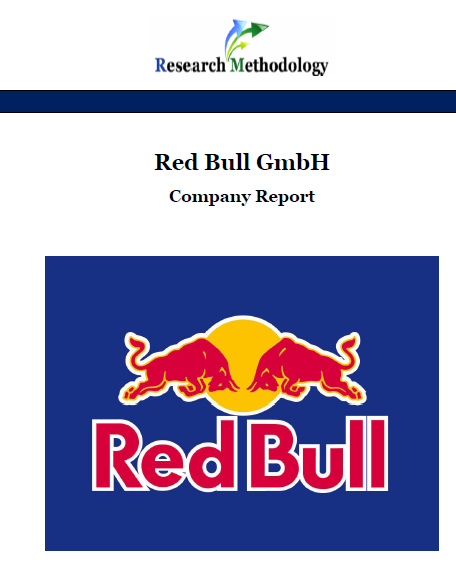
Red Bull GmbH is a manufacturer of one of the most popular energy drinks Red Bull based in Austria. The company has been founded by Dietrich Mateschitz in the mid 1980’s and the first Red Bull Energy Drink was sold in Austria on April 1, 1987. Today, Red Bull beverages are sold in more than 169 countries and about 60 billion cans of Red Bull have been consumed so far. In 2015 alone, more than 5.9 billion cans were sold, which is an increase of 6.1 per cent compared to the previous year. In 2015, Red Bull GmbH revenues amounted to EUR 5.903 billion, a 15.5 per cent increase compared to the previous year. The company employs 10,997 people in 169 countries. Red Bull pursues product differentiation business strategy and the company differentiates its energy drinks according to its perceived positive effects in terms of enhancing physical and mental performance. Red Bull brand possesses solid competitive advantages in terms of the first mover advantage, high scope of brand recognition, an impressive level of profitability and effective marketing strategy. The marketing message of the brand ‘Red Bull gives you wings’ is effectively communicated to the target customer segment via multiple communication channels in an integrated manner. Along with its own media platforms, Red Bull owns a set of sports teams such as RB Leipzig, FC Red Bull Salzburg, Red Bull Brasil, New York Red Bulls, Red Bull Racing and Scuderia Toro Rosso. Despite the phenomenal success of the company, Red Bull has a set of weaknesses that include its overly expensive prices, limited range of products, portfolio of products that are rightly considered as unhealthy and concentrated production facilities. Red Bull GmbH Report contains the application of the major analytical strategic frameworks in business studies such as SWOT, PESTEL, Porter’s Five…
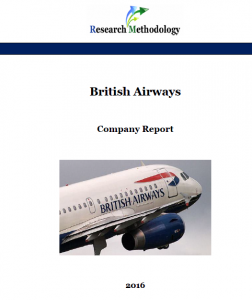
British Airways (BA) is the largest airline company in the UK and it flies globally to more than 400 destinations to airports in nearly 80 countries. British Airways is a part of International Airline Group (IAG) that also owns three other airline brands – Aer Lingus, Iberia and Vueling. The Group also owns 13.55 per cent of the equity of IB OpCo Holding S.L. (“Iberia”) and 86.26 per cent of the equity of Avios Group (AGL) Limited (“AGL”). IAG made a record profit of GBP 1,264 million in 2015. By the end of 2015, British Airways had 39,304 employees globally (Annual Report, 2015). British Airways pursues service differentiation business strategy and differentiates its services via an extensive reliance on digitalization and information technology and high level of customization of service provision. These points represent solid sources of British Airways’ competitive advantage. Major weaknesses related to British Airways include an overdependence on the UK market and low profitability of business operations. At the same time, the airline is presented with the opportunities of forming strategic cooperation with other businesses in airline and catering industries, further engaging in international market expansion and benefiting from synergy via closer integration between IAG’s operating airlines. British Airways Report contains the application of the major analytical strategic frameworks in business studies such as SWOT, PESTEL, Porter’s Five Forces, Value Chain analysis and McKinsey 7S Model on British Airways. Moreover, the report contains analyses of British Airways’ business strategy, leadership and organizational structure and its marketing strategy. The report also discusses the issues of corporate social responsibility. 1. Introduction 2. Business Strategy 3. Leadership 4. Organizational Structure 5. SWOT Analysis 5.1 Strengths 5.2 Weaknesses 5.3 Opportunities 5.4 Threats 6. PESTEL Analysis 6.1 Political Factors 6.2 Economic Factors 6.3 Social Factors 6.4 Technological Factors 6.5 Environmental Factors 6.6…
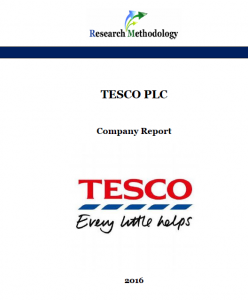
Tesco PLC is a UK-based global supermarket chain and it has 7817 shops and 517,802 employees around the world. Founded in 1919 by Jack Cohen, Tesco has emerged to become the biggest retailer in the UK and more than 80 million shopping trips are made to Tesco stores each week (Annual Report, 2015). Tesco’s mission statement is “to be the champion for customers – to help everyone who shops with us enjoy a better quality of life and an easier way of living”. Tesco business strategy can be described as cost leadership with a focus on availability, range and customer service. During the financial year of 2015, the group sales amounted to GBP 69.7 billion with the group trading profit of GBP 1.4 billion, however, the company made a net loss of GBP 6.4 billion during the same period (Annual Report, 2015). Along with market saturation, such a poor financial performance has been caused by a series of scandals that include an overstatement of commercial income by GBP 208 million (Rigby, 2015) and the cases of supplier mistreatment. It has been revealed that the supermarket chain demanded a payment of GBP 1 million from one of its suppliers, L’Oreal (Ahmed, 2015) and the company has been found to delay payment to suppliers in order to improve its operational profit margins in 2014 (Simpson, 2016). These scandals caused a severe damage to Tesco’s brand image and replacement of the leadership at the top level. The new leadership headed by a new Chairman of the Board John Allan and new CEO Dave Lewis pledged to restore the trust towards the brand via focusing on the core values that had made Tesco popular in the first place. Tesco PLC Report contains the application of the major analytical strategic frameworks in business studies such…
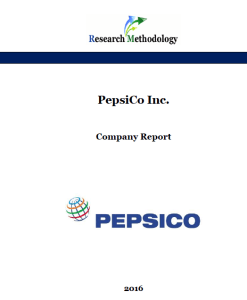
PepsiCo Inc. is a US-based global food, snack and beverage company that was incorporated in Delaware in 1919 and reincorporated in North Carolina in 1986. Today, PepsiCo brand portfolio includes a range of globally famous brand names such as Pepsi, Lays, Lipton, Doritos, Tropicana, Walkers, Miranda, Cheetos and others. In total, PepsiCo portfolio comprises 22 brands and each of these brands have generated at least one billion USD in retail sales in 2015. Products belonging to PepsiCo portfolio are consumed about one billion times each day in more than 200 countries and territories. PepsiCo’s mission statement is formulated as “to provide consumers around the world with delicious, affordable, convenient and complementary foods and beverages from wholesome breakfasts to healthy and fun daytime snacks and beverages to evening treats” The company employs 263,000 people globally, including approximately 110,000 people within the United States.In 2015, PepsiCo achieved 5 per cent organic revenue growth with a cash flow of more than USD 8.1 billion. About 53 per cent of net revenues were generated from food business, whereas net revenues generated from the beverage businesses amounted to 47 per cent. PepsiCo has major impact in the US economy. The company has been acknowledged as the Number One contributor to retail sales growth in the U.S. in 2015, generating more growth than the next 15 largest food and beverage manufacturers combined. PepsiCo Report contains the application of the major analytical strategic frameworks in business studies such as SWOT, PESTEL, Porter’s Five Forces, Value Chain analysis and McKinsey 7S Model on PepsiCo. Moreover, the report contains analyses of PepsiCo’s business strategy, leadership and organizational structure and its marketing strategy. The report also discusses the issues of corporate social responsibility. 1. Introduction 2. Business Strategy 3. Leadership and Organizational Structure 4. SWOT Analysis 4.1 Strengths 4.2 Weaknesses…
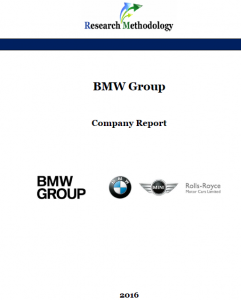
Bayerische Motoren Werke Aktiengesellschaft (BMW AG) is the parent company of the BMW Group, a global automobile manufacturer and seller based in Munich Germany. Originally founded as Bayerische Flugzeugwerke AG (BFW) in 1916 the company has emerged as one of the leading brands in the global market of luxury cars. BMW Group owns famous BMW, MINI and Rolls-Royce Motor Car Limited brands. In 2015 the company sold its products to more than 2.2 million people in more than 150 countries, an increase of 6.1 per cent compared to the previous year. BMW Group generated more than 93 billion EUR revenues in 2015, a significant increase of 14.6 per cent compared to the previous year. BMW net profit in 2015 increased by 10 per cent to around 6.4 billion EUR. The company employs 122,244 people globally and it has a hierarchical organizational structure. BMW Group operations are divided into four business segments: automotive, motorcycles, financial services and other entities. The company has 30 manufacturing sites in 14 countries and robotic technology plays an instrumental role in BMW manufacturing process. BMW Group pursues product differentiation business strategy and differentiates its vehicles on the basis of design, performance and advanced features and functionalities. Moreover, high level of integration of information technology and internet, as well as, electromobility represent solid grounds of BMW Group competitive advantage. At the same time, BMW Group has certain weaknesses that include a lack of portfolio diversification with only three brands, a high level of vulnerability to economic crises due to the premium pricing strategy and the lack of strategic partnerships with other businesses within and outside of automobile industry. BMW Group Report contains the application of the major analytical strategic frameworks in business studies such as SWOT, PESTEL, Porter’s Five Forces, Value Chain analysis and McKinsey 7S Model…
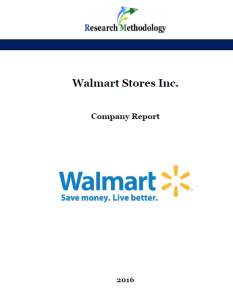
Walmart Stores Inc. is a US-based global discount supermarket chain that has more than 11,000 stores in 27 countries and serves nearly 260 million customers each week under 72 banners (Annual Report, 2015). Founded in 1962 by Sam Walton, today Walmart employs 2.2 million people globally and it is the world’s largest retailer. Walmart U.S. delivered net sales of USD 288 billion, a more than 3 percent increase in the fiscal year of 2015 and consolidated fiscal revenues equaled to USD 486 billion (Annual Report, 2015). During the fiscal year of 2015 Walmart revenues grew by more than USD9 billion to nearly USD 486 billion and earnings per share were USD 4.99, a nearly 3 percent increase from the previous year . On a constant currency basis, net sales surpassed USD 141 billion, while operating income increased to more than USD6 billion (Annual Report, 2015). ‘Everyday low prices’ is Walmart’s marketing communication message and this message serves as a guiding principle for Walmart business strategy. Specifically, Walmart strives to achieve cost leadership by the use of economies of scale to a great extent, exercising its huge bargaining power in dealing with suppliers and paying low wages to employees. Walmart Report contains the application of the major analytical strategic frameworks in business studies such as SWOT, PESTEL, Porter’s Five Forces, Value Chain analysis and McKinsey 7S Model on Walmart. Moreover, the report contains analyses of Walmart’s business strategy, leadership and organizational structure and its marketing strategy. The report also discusses the issues of corporate social responsibility. 1. Introduction 2. Business Strategy 3. Leadership and Organizational Structure 4. SWOT Analysis 4.1 Strengths 4.2 Weaknesses 4.3 Opportunities 4.4 Threats 5. PESTEL Analysis 5.1 Political Factors 5.2 Economic Factors 5.3 Social Factors 5.4 Technological Factors 5.5 Environmental Factors 5.6 Legal Factors 6. Marketing Strategy…
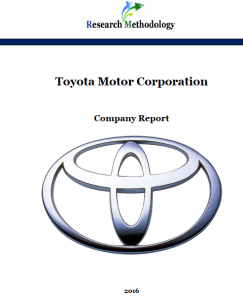
Toyota Motor Corporation is a global automobile manufacturing company that employs about 330,000 people. The company celebrated its 75th anniversary in 2012 and adherence to its mission statement “contributing to society by making ever-better cars” has taken the company to the global leadership in the industry in terms of sales. During the fiscal year of 2014, Toyota sold 9.116 million units of vehicles and generated revenues of ¥25.6919 trillion, which is an increase of ¥3,627.7 billion, or 16.4%, compared with the prior fiscal year. At the same time, it is important to clarify that revenues reported above were positively affected from a ¥900.0 billion boost due to exchange-rate fluctuations. Also, during the fiscal year of 2014, company expenses increased by ¥480.0 billion compared to the previous period. Senior management introduced massive changes to the business since 2009 immediately after the global financial and economic crisis. These include the reorganization of operations into four business units in 2013 and an extensive promotion of ‘One Toyota’ concept. The company has identified growth, efficiency and stability as three key priorities in its financial strategy. This report contains application of SWOT, PESTEL, Porter’s Five Forces and Value-Chain analytical frameworks towards the case study of Toyota Motor Corporation. The report also comprises analysis of Toyota’s marketing strategy and company’s approach towards Corporate Social Responsibility (CSR). 1. Introduction 2. Value-Chain Analysis 2.1 Primary Activities 2.2 Support Activities 3. SWOT Analysis 3.1 Strengths 3.2 Weaknesses 3.3 Opportunities 3.4 Threats 4. Marketing Strategy 4.1 Advertising 4.2 Sales Promotion 4.3 Events & Experiences 4.4 Public Relations 4.5 Direct Marketing 4.6 Personal Selling 5. PESTEL Analysis 5.1 Political Factors 5.2 Economic Factors 5.3 Social Factors 5.4 Technological Factors 5.5 Environmental Factors 5.6 Legal Factors 6. Porter’s Five Forces Analysis 7. Corporate Social Responsibility (CSR) 7.1 CSR Programs and Initiatives 7.2…
